
Hypnum cupressiforme (Cypress-Leaved Plait-Moss) on 4-20-22, #870-27.
Hello everyone! I hope this post finds you well. I haven’t been to the secluded woods on a friend’s farm since 2020. This is where in 2020 I found the Green Dragon, Jack-In-The-Pulpit, and several other wildflowers I hadn’t seen before. It is always very interesting going into the woods but it can become hard to walk in as the summer progresses. The mosquitos are also terrible after mid-May.
On April 19, after I fed the cows there, I decided to check out the area along the creek where I found a single White Morel in 2020. This area wasn’t far from the driveway. Well, I found five Yellow Morels… Then I decided to walk down the creek (in the water) just to have a quick look. Time flies and I made it home at 3… I didn’t have my camera and it was going to rain so I didn’t go back.
I took my camera with me the next day so I could take photos after I was finished feeding the cows. First I checked to see if there were any more morels where I found them on the 19th. There weren’t anymore, so I stepped into the creek. The hillside on the west side of the creek is very steep, so it is best to just walk in the water.
The first photo I took (top of the post) is the (Hypnum cupressiforme (Cypress-Leaved Plait-Moss) growing at the bottom of a huge tree. I identified it in 2020 from photos I submitted on iNaturalist. This moss is really neat, but it is just getting started. Hopefully, I can make it back into the woods when it is in bloom.
Interestingly, north of this tree is just a regular forest, an open woodland with mostly brush all the way to the driveway. As soon as you go beyond the tree, you step into what seems like a magical world. All along the hillside to the fence. Past the fence is once again an open woodland with a lot of brush. There are open areas where the Jack-In-The-Pulpit and other hit-and-miss wildflowers grow, but mostly it is just low-growing brush that is hard to walk in.
Then I found this one…
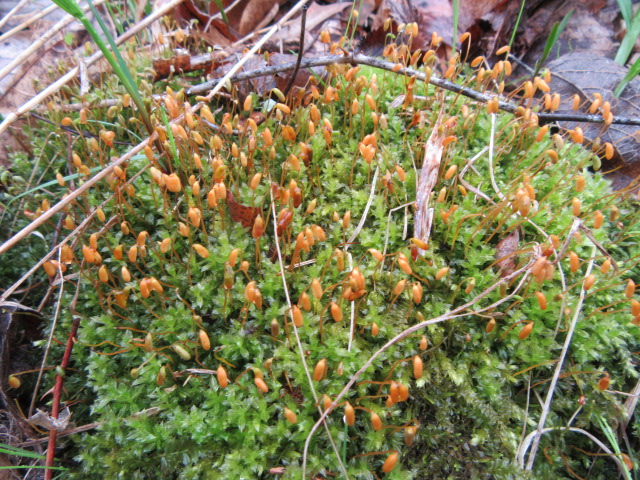
Plagiomnium cuspidatum (Woodsy Thyme-Moss) on 4-20-22, #870-35.
How neat is that? The Woodsy Thyme-Moss was really putting on a show. I hadn’t photographed it until now and it was a great find.
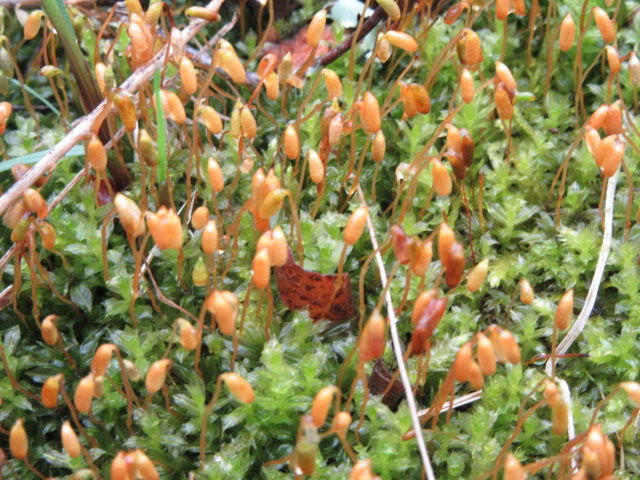
Plagiomnium cuspidatum (Woodsy Thyme-Moss) on 4-20-22, #870-36.
When moss is blooming you literally have to get down on your hands and knees with a magnifying glass to have a closer look. Well, I was standing in water so I didn’t get on my knees this time. Different species of moss have different leaves and flowers. A lot of them have similar leaves but their flowers are so weird… Like the Bladder Moss on my farm.
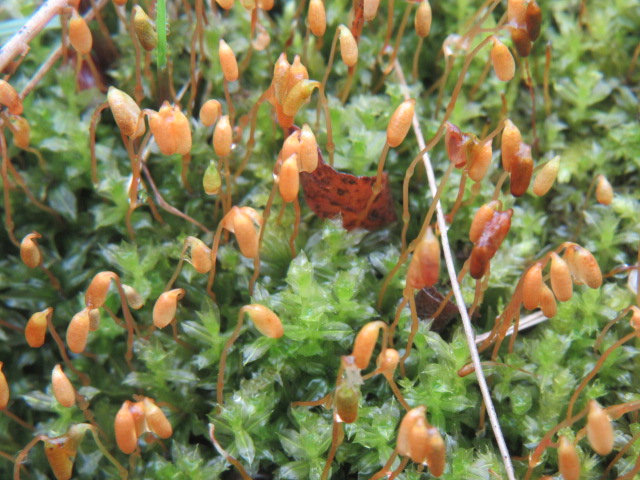
Plagiomnium cuspidatum (Woodsy Thyme-Moss) on 4-20-22, #870-37.
It took quite a few photos using a magnifying glass in front of my lens to get two close-ups that weren’t blurry. It had also been raining off and on for two days and was sprinkling a little when I took the photos. This was the first time I saw this moss in bloom, so I wasn’t going to let a few sprinkles stop me.
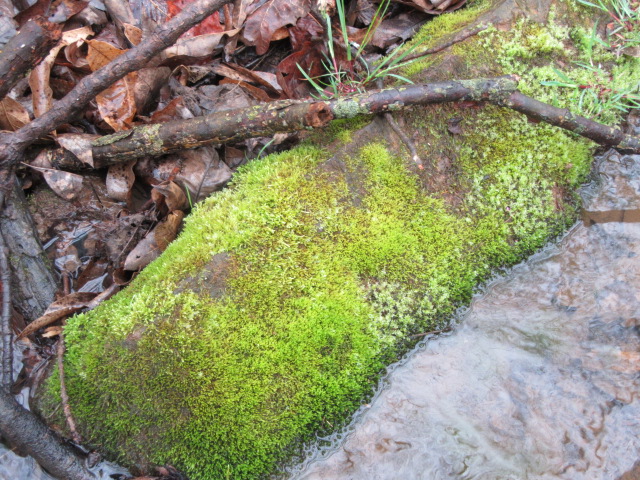
There is a lot of moss growing along the creek. On rocks, at the bases of trees, and on the ground.

There are also a lot of decaying branches and trees that have fallen over which is a perfect habitat for many species of fungi.
Now for the highlight of the day, as if flowering moss wasn’t good enough…
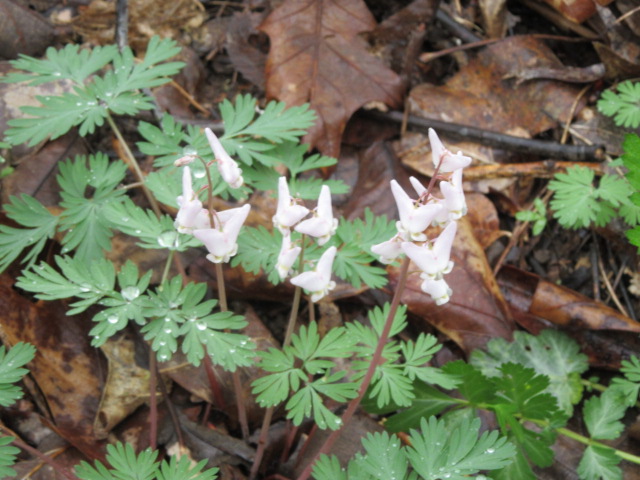
Dicentra cucullaria (Dutchman’s Breeches) on 4-20-22, #870-17.
On April 23 in 2020, I found a single Dicentra cucullaria next to the creek on a steep hillside. It was pretty close to the end of the creek and I could see the highway. All that way, I only found one plant like it and there were no flowers. I was able to identify it as Dicentra cucullaria (Dutchman’s Breeches) by its leaves using the “drag and drop” feature on iNaturalist. Anyway, a few days after I saw it, we had a huge storm and the plant was either washed away or covered with mud from water rushing down the hillside. It was gone… If it wasn’t for iNaturalist, I wouldn’t have known what it was.
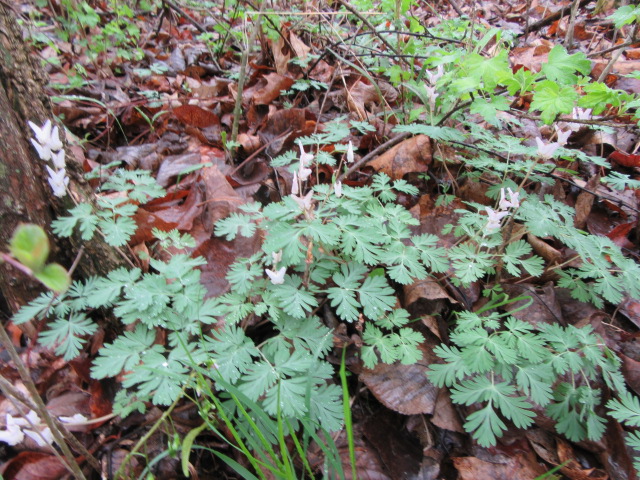
Dicentra cucullaria (Dutchman’s Breeches) on 4-20-22, #870-18.
SO, on the 19th, I was SHOCKED to see hundreds of Dutchman’s breeches all along the hillside next to the creek. It was AWESOME!
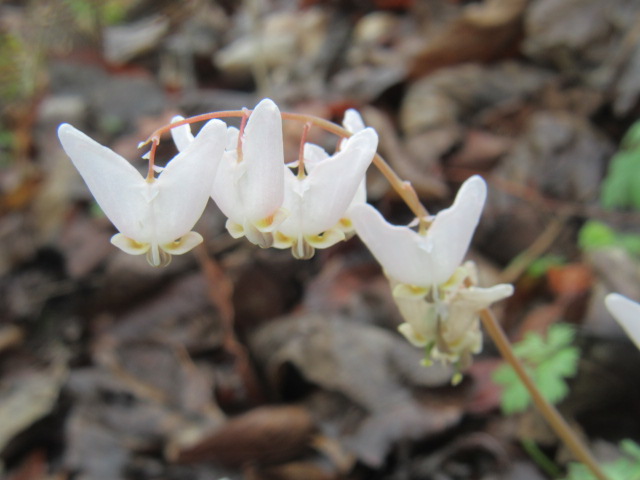
Dicentra cucullaria (Dutchman’s Breeches) on 4-20-22, #870-17.
The flowers are really neat for sure but somewhat difficult to explain…
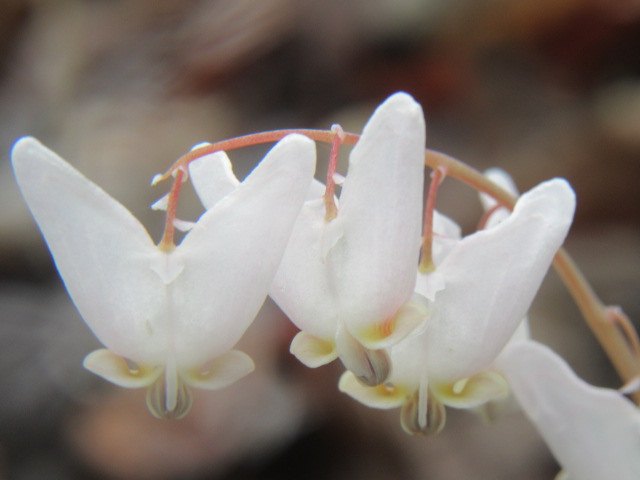
Dicentra cucullaria (Dutchman’s Breeches) on 4-20-22, #870-26.
Hmmm… The spreading petal spurs distinguish this species from Dicentra canadensis (Squirrel Corn) whose spurs are more rounded and parallel.
Dutchman’s Breeches are rhizomatous, but there are bulblets at the base of the long leaf petioles where they emerge from the ground… Hmmm… Perhaps I should dig some up and bring them home. I know just the spot to but them.
Then…
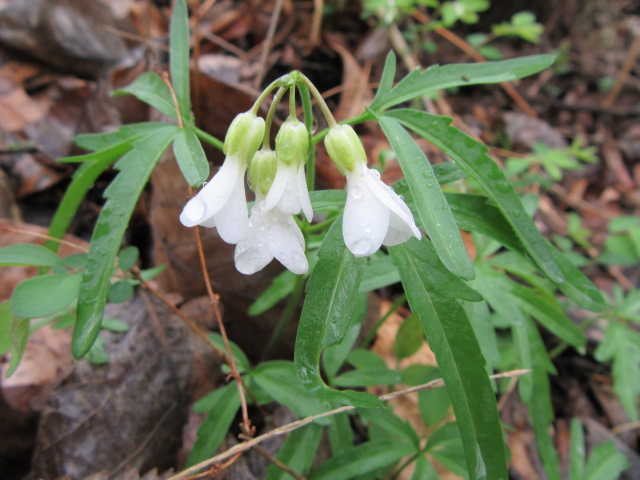
Cardamine concatenata (Cut-leaved Toothwort) on 4-20-22, #870-1.
Another plant I only found one of, and not blooming either, was the Cardamine concatenata also known as the Cut-leaved Toothwort. I looked for it every time I went back into the woods in 2020 but I couldn’t find it again. It just vanished.
This time, like the Dutchman’s Breeches, there were hundreds all along the top of the hillside.
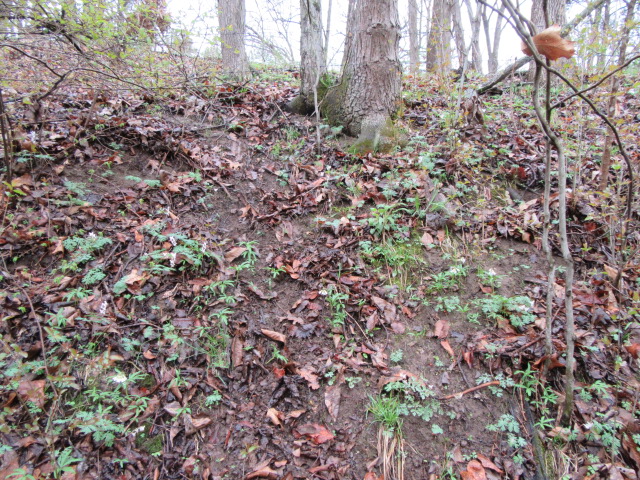
Cardamine concatenata (Cut-leaved Toothwort) on 4-20-22, #870-2.
The area in the above photo was one of a couple that has quite a few Cut-leaved Toothwort growing. They are in danger of being washed away or covered with mud if we get heavy rain. The fallen leaves have already partially washed off the hillside.
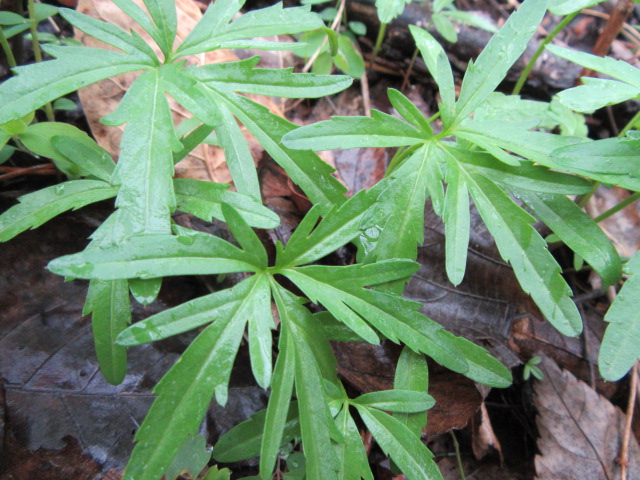
Cardamine concatenata (Cut-leaved Toothwort) on 4-20-22, #870-7.
The leaves are a dead giveaway to what these plants are. The only thing I had to go by in 2020 which I uploaded on iNaturalist to identify the species.
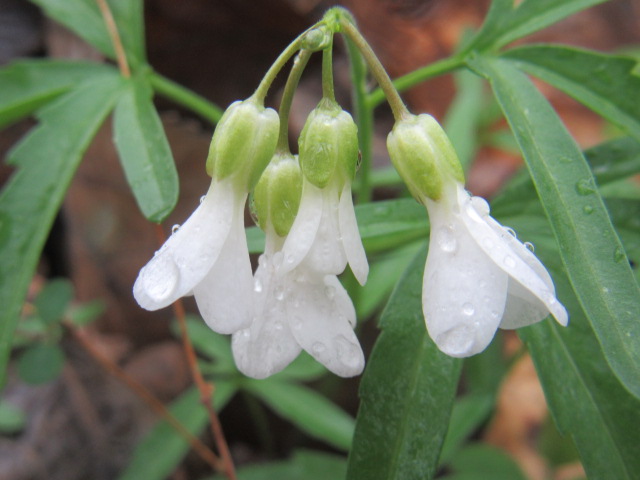
Cardamine concatenata (Cut-leaved Toothwort) on 4-20-22, #870-9.
The drooping flowers have 4 bright white petals surrounded by 5 sepals. The flowers will open up but perhaps were closed because of it being cloudy and rainy…
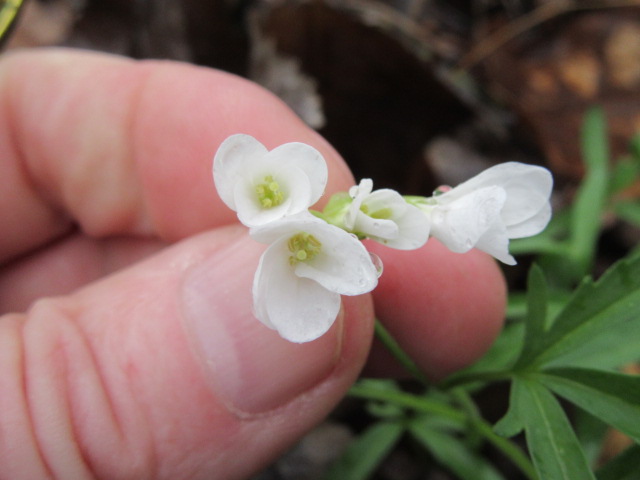
Cardamine concatenata (Cut-leaved Toothwort) on 4-20-22, #870-10.
Somewhere in there are the stamens, filaments, anthers, and the ovary…
There were also AAAALLLLOOOOTTTT of Virginia Spring Beauty (Claytonia virginica) whose flowers were closed. The White Fawn Lily (or Dogtooth Violet) (Erythronium albidum) were all over the place but haven’t started blooming yet. They are very close, though.
In all, it was a great day! Now I can finish the pages for the Dutchman’s Breeches and Cut-leaved Toothwort so I can get them published.
Until next time, be safe, stay positive, and always be thankful. Spring is definitely a great time of the year. Time to GET DIRTY!

















